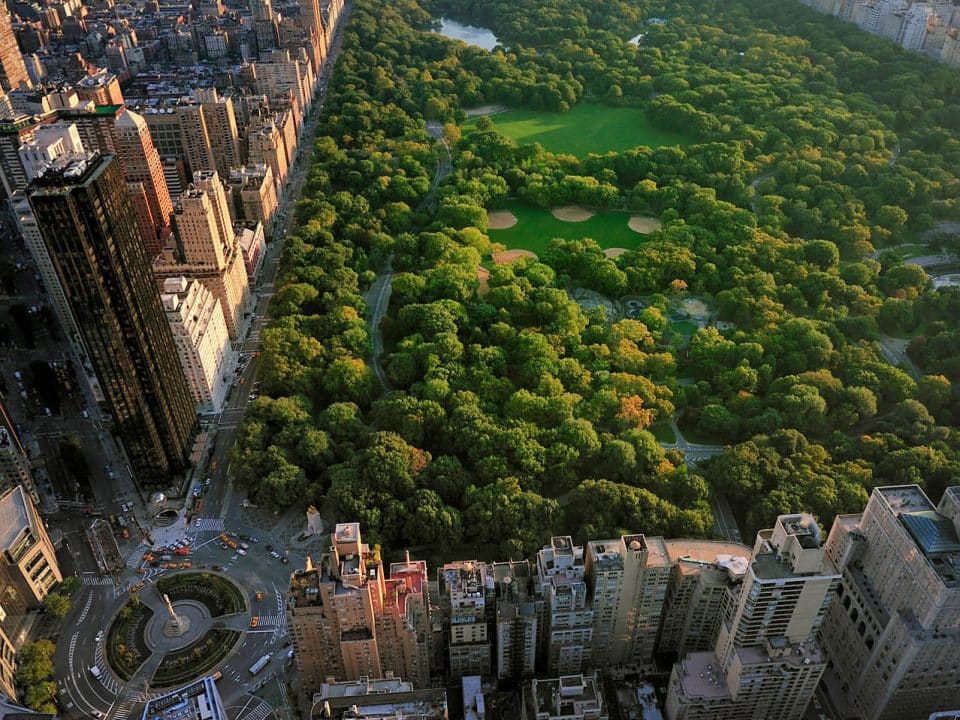
Is Public Space the New Anchor Tenant?
Public parks improve communities’ social and physical health worldwide according to Public Parks and Wellbeing in Urban Areas of the United States by Larson and Rethinking Urban Space in Cities — A Study of Parks in Hyderabad, India by Shrinagesh and Markandey. Parks and urban trails also attract users to surrounding real estate. Park visitors establish traffic counts along neighboring streets that become an essential metric for real estate values. Furthermore, parks are considered an amenity to surrounding property. Urban planners have studied the value of parks for generations through cost-benefit analyses and repeatedly find that benefits exceed the costs of development.
Municipal Projects
Traditionally, public entities create parks as an amenity to their communities. The most prominent US park example is Central Park in New York City. The City of New York spent $540.8 million (in current dollars) building Central Park. Frederick Law Olmsted, superintendent and landscape architect of Central Park, found that assessed values of nearby real estate increased from $1 billion to $9.1 billion over the construction period (in current dollars). This represents an appreciation of 810%, compared to the average property appreciation city-wide during this period of 100%. The park created an incremental $8.1 billion in value for the surrounding real estate. Central Park increased today’s NYC tax revenue by $203.9 million. Using the current millage rate and the historical incremental property value, the internal rate of return on the city’s investment over the past 148 years is 40%.
New York City used eminent domain to acquire 700 of the 843 acres in Central Park. Whether the fair market value paid for the land was accurate or not is debatable. Regardless, the success promoted park investments in other areas and ultimately set the tone for public park investment in America for generations. A letter in the New York Times stated, “Central Park has not only paid, but also been a most profitable investment, and regarded in the light of a real estate transaction alone, has been a great success.” Even with the land value under question, NYC’s return on investment was a historic win for urban planning and park development.
The success of Central Park led to Essex County, New Jersey, hiring consultants to assess their park’s value. Their results showed that park-adjacent real estate rose at nearly three times the rate of non-park adjacent real estate from 1922 to 1929, according to The Impact of Parks on Property Values: A Review of the Empirical Evidence by Crompton. If public parks produce a 300% increase in surrounding property value, as is the case in Essex County, or an 800% increase as is the case in Central Park, then the fact that parks produce value is undeniable. The incremental appreciation that parks produced compared to the appreciation of other surrounding property is shown in Figure 1.
Figure 1 — Source: FBW: The Legacy of Central Park (2018) and St Louis Federal Reserve Economic Data (FRED) as of April 2022
Today, parks range in use and conditions. The wider range of park functions increases the complexity of measuring impact but also increases the opportunity for incremental benefits. Nevertheless, this variance has posed several issues with quantifying the value of public space. One way to quantify park value is through the traffic that they generate. According to the available Placer.ai data, park adjacent Dunkin’ stores in Brooklyn see a monthly average of 12,750 visitors; meanwhile, non-park adjacent stores see 6,150. Dunkin’ stores next to a park in Brooklyn see an increase in visits of 107%, alluding to better sales and a higher chance of lease renewal.
Impact on Private Property
Developers and communities recognize the value of being near municipal parks now more than ever. According to Impacts of COVID-19 pandemic on urban park visitation: a global analysis, parks have seen a significant increase in visitors since March 2020. Countries like the UK, Canada, and Denmark have seen park visits double since pre-COVID. Even though parks are prevalent right now, the intersection of development and parks primarily revolves around urban trails and small community parks. ULI published an article in 2016 highlighting the prevalence of bike-oriented developments featuring bike-specific amenities. This initiative, along with a growing demand for bike infrastructure, has made developers ever more bullish on trail-oriented development. Examples of urban trails are The Greenway in Boston, The Brooklyn Waterfront Greenway, The High Line in Manhattan, Gainesville’s Hawthorne Trail, Atlanta’s Beltline, and Miami’s Underline Park. These projects are an integral amenity for their communities while providing municipalities with more tax revenue and developers with a new attraction to build around.
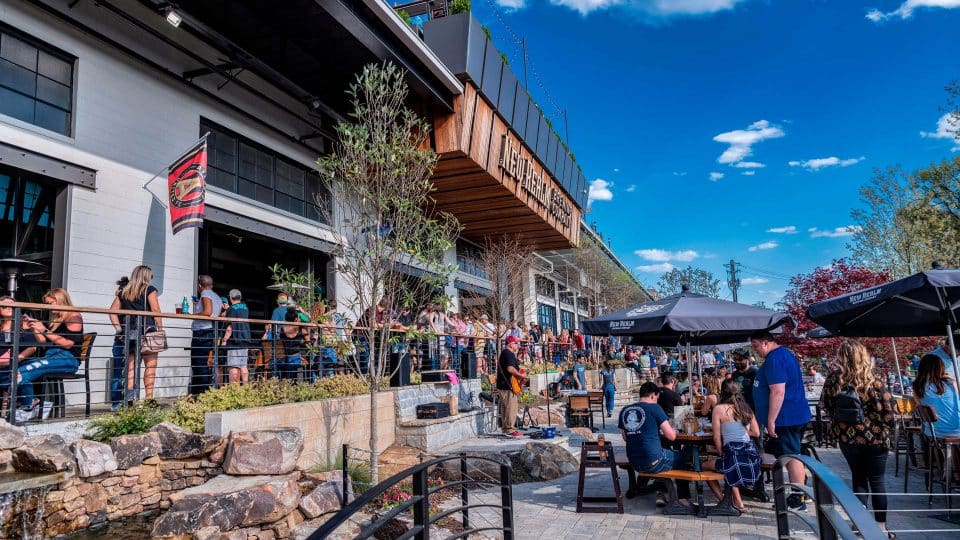
The Beltline, a public initiative to transform old railroad tracks into urban trails, is helping transform downtown Atlanta into a walkable urban area. In August of 2014, the City of Atlanta opened the Eastside Trail portion of the Beltline, leading to tremendous growth. Within a 10-minute walk from the Eastside Trail, the population grew 177% from 2010 to 2021, compared to Atlanta’s average population growth of 19%. North American Properties seized this opportunity by building the Edge, a 350-unit multi-family property with 29,000 SF of retail, on either side of the Beltline. NAP was able to secure a Shake Shack as a tenant, which only has 2 locations in the city of Atlanta and is a tenant drawn to park proximity. Anthem on Ashley is another multi-family project that NAP built just steps away from the Beltline. Richard Munger of NAP said, “Urban trail-oriented development is the new beachfront property, as people of all ages increasingly seek to live in active, walkable environments,” and regarded Anthem on Ashley as a “Class AA” property.
Project Dedication
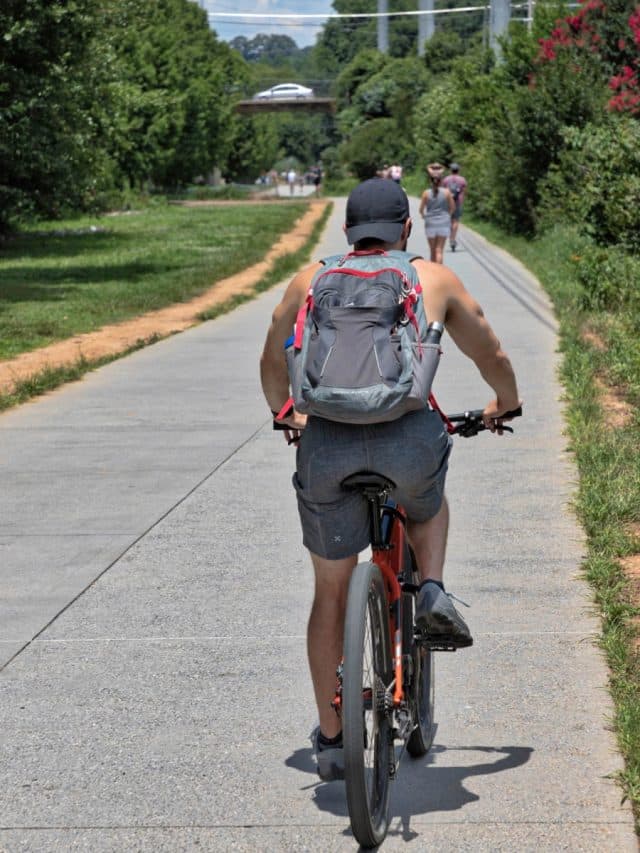
In addition to taking advantage of the incredible opportunities offered by municipal-led public space projects, NAP has also capitalized on repositioning assets by revitalizing its own public spaces. This is an indication that developers are beginning to produce their own public use, not to simply meet a regulation but to enhance the remainder of the asset. If a property is not proximate to a community park or trail and it is of significant magnitude, it is possible to dedicate a portion of the site to a non-rented public activity. Converting private property to community use by creating local public spaces may create an amenity to the remainder of the site enhancing the built portion of the property. The public portion of the property might be considered the anchor to the project because it brings potential customers to the site. Developers are motivated to create a smaller rentable area with greater value due to the public attraction.
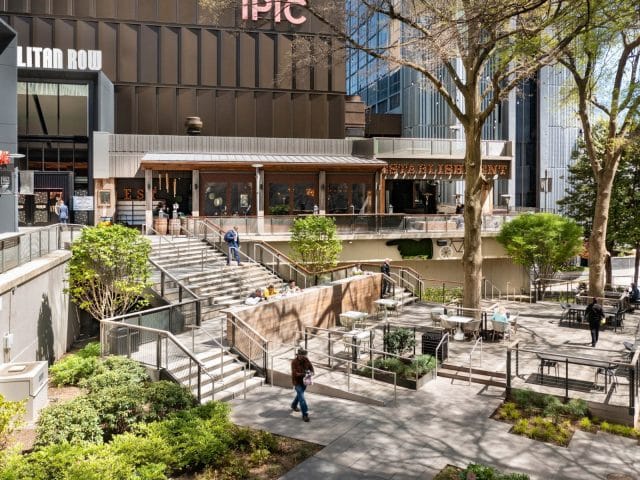
Colony Square is a modernist office and retail property from the 1970s, which NAP purchased in 2015 for $164.5 million. NAP’s strategy looked to modernize the 163,000 SF of enclosed retail into a street-facing open-air mall. Mark Toro of NAP said, “Colony Square is the highest density intersection in the city.” This density combined with a renewed interest in urban living created a demand for class A retail. The site was stuck in the automobile-dependent regional mall era and needed an update to appeal to foot traffic. According to Placer.ai data provided by NAP, daily visitors increased from approximately 650 to 1,700 following renovation. Now Colony Square caters to a wider variety of customers, alluding to it being a community center and gathering place for many. Furthermore, not only is this pre- and post-development data but also pre- and post-covid data. Increasing urban retail and office visitors by 160% post-covid is a significant accomplishment that speaks volumes about the demand for public gathering space in urban environments.
Ultimately, the redevelopment costs totaled $204 million and were greater than acquisition costs. Exact returns were not available, but this project was a tremendous success for North American Properties and Atlanta’s central business district. Nick Lombardo, a development manager at NAP, said this about how the success of Colony Square impacted their development strategy:
Any time we can leverage an existing public space like the Beltline, it’s a win for us and our guests. When we don’t have adjacency to public space built-in, we have to create our own. While it costs more, it allows us to design the space to suit our needs and our vision. At Colony Square, we built a grove suited to daily lunch, dinner, happy hour, and meeting space. We built the plaza for yoga and performances. We added the LED screen for watch parties. All of these promote our brand of creating space for experience making.
Colony Square is a prime example of private developers successfully creating their own public space to revive an asset; a strategy that NAP is continuing to pursue at other properties such as Avenue East Cobb, Birkdale Village, and Peachtree Corners.
According to How resilient are REITs to a pandemic? The COVID-19 effect, grocery-anchored REITs have become most stable since COVID, amidst a crisis in other retail assets. Haig Buchakjian, EVP of Operations at Brixmor, said the grocery-anchored REIT had not quantified the value of public space. Yet, it still plays a significant role in giving customers the most pleasant experience on their property while enticing them to return. Brixmor has noticed an uptick in dwell time at properties with public spaces, promoting sales. Consequently, the REIT focuses on implementing more public spaces in their redevelopments. Public space can even improve the most stable retail assets to achieve their full potential.
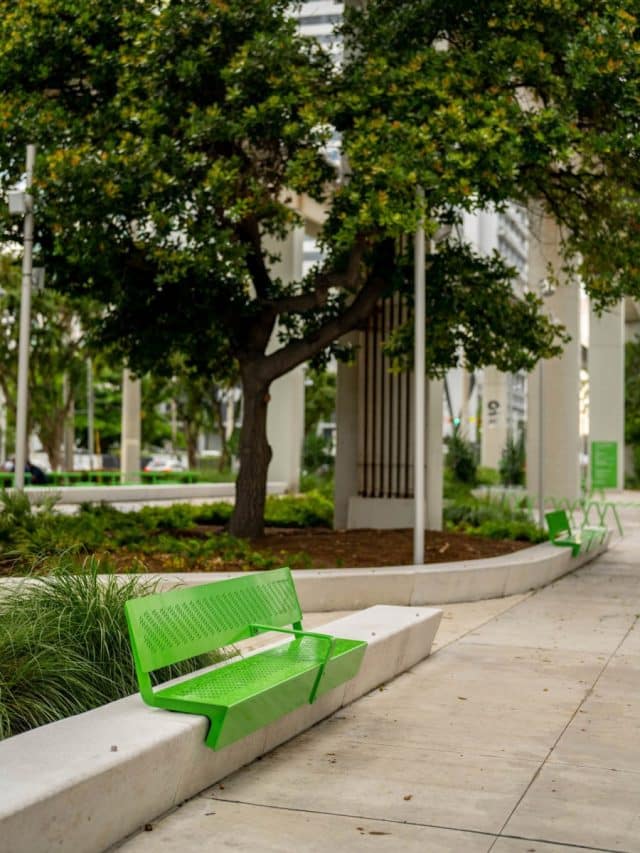
This experience making trend has been rapidly growing in popularity amongst developers. Tim Peterson, COO and CIO of The Altman Companies, came to UF and spoke about his experience with livability in the Altman Companies’ developments. He stated that cap rate compression and lease retention are greater in properties that prioritize livability and create experiences for the community. Public space tends to cover both attributes while directly improving physiological and psychological health. Individuals living in greener urban areas display more indicators of positive mental health than those who live in less green urban areas. According to Public Parks and Wellbeing in Urban Areas of the United States, green spaces are associated with higher cognitive development, social connections, and neighborhood satisfaction. Public and green spaces offer livability elements that improve real estate values through cap rate compression and lease retention while enhancing long-term economic development through better cognitive function in students and social connections in adults. These qualities lead to less risky returns for an investor and a more sustainable lifestyle for communities.
Bottom Line
Increased foot traffic, cap rate compression, and lease retention show the inherent value of building places to congregate. Therefore, sacrificing a small fraction of leasable area for public space to revitalize a property and avoid obsolescence can be an incredible value-add strategy. Developers who have prioritized creating an experience for their tenants and residents have been able to sell their properties for a premium by building a community around their real estate. The demands of consumers are evolving, and developers will either capitalize on such trends or see their properties fall behind. Whether you are paying a premium for park-adjacent real estate or creating your own common areas, the community congregates around public space, lessening long-term risk.